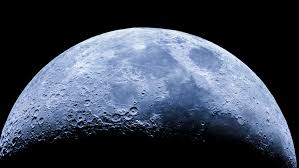Water discovered on moon’s sunlit side

ABRIENDOMUNDO/ISTOCK/GETTY IMAGES PLUS
According to NPR, “NASA has confirmed the presence of water on the moon’s sunlit surface, a breakthrough that suggests the chemical compound that is vital to life on Earth could be distributed across more parts of the lunar surface than the ice that has previously been found in dark and cold areas.”
November 3, 2020
On Monday, Oct. 26, NASA released a statement claiming they had found water on the moon’s sunlit surface. This means water on the moon may be more abundant and accessible than previously thought, which could be good news for future astronauts.
The discovery comes from NASA’s Stratospheric Observatory for Infrared Astronomy, or SOFIA. With a modified Boeing 747 that can take its large telescope at altitudes up to 45,000 feet. Those heights allow researchers to gaze at objects in space with hardly any visual disruptions from water vapor. The water was spotted near the Clavius crater, one of the greatest crater formations on the celestial satellite and one that can be seen with the naked eye. Water was previously thought to only exist in regions of the moon that are always in shadow and do not receive sunlight, making them dangerous and frigid for astronauts to reach.
So, what does this new discovery mean? NASA has goals to establish a permanent base on the moon by the end of the decade with the Artemis program. This new discovery of water provides many benefits to future astronauts that will habit the moon.
“Water on the surface of the moon can be used for several very important things, such as sustaining astronauts, creating oxygen and hydrogen for rocket fuel or power generation, or conducting horticulture experiments,” said Craig Lindley, a computational modeling expert at Australia’s science agency.
Until now, the quest for water ice on the moon has been focused on the shadows of large polar craters, among some of the coldest places in the solar system, with temperatures dipping down to minus -400 degrees Fahrenheit. That is so cold that anything that lands there rarely leaves. This discovery of accessible water is not only beneficial to future astronauts but also to NASA.
“Water is central to human life but is expensive to launch into space, Finding water on the moon may mean we can utilize the water that is there versus bringing the water with us,” said Casey Honniball, a postdoctoral fellow at NASA’s Goddard Space Flight Center.
NASA and private companies are working to get more information from the Moon’s surface. In late 2023, NASA plans to send a rover to the Moon called Viper, which will map where the water ice is on the surface and collect samples. Data from the rover, along with future remote observations, will eventually conclude if future lunar astronauts will be able to use any of this discovered water. Until then NASA will continue to gather information about the moon in hopes of later exploration of Mars.








